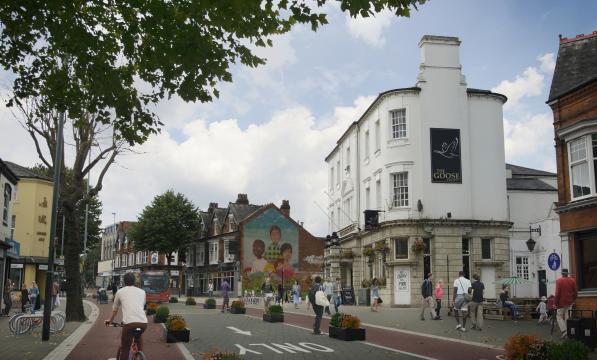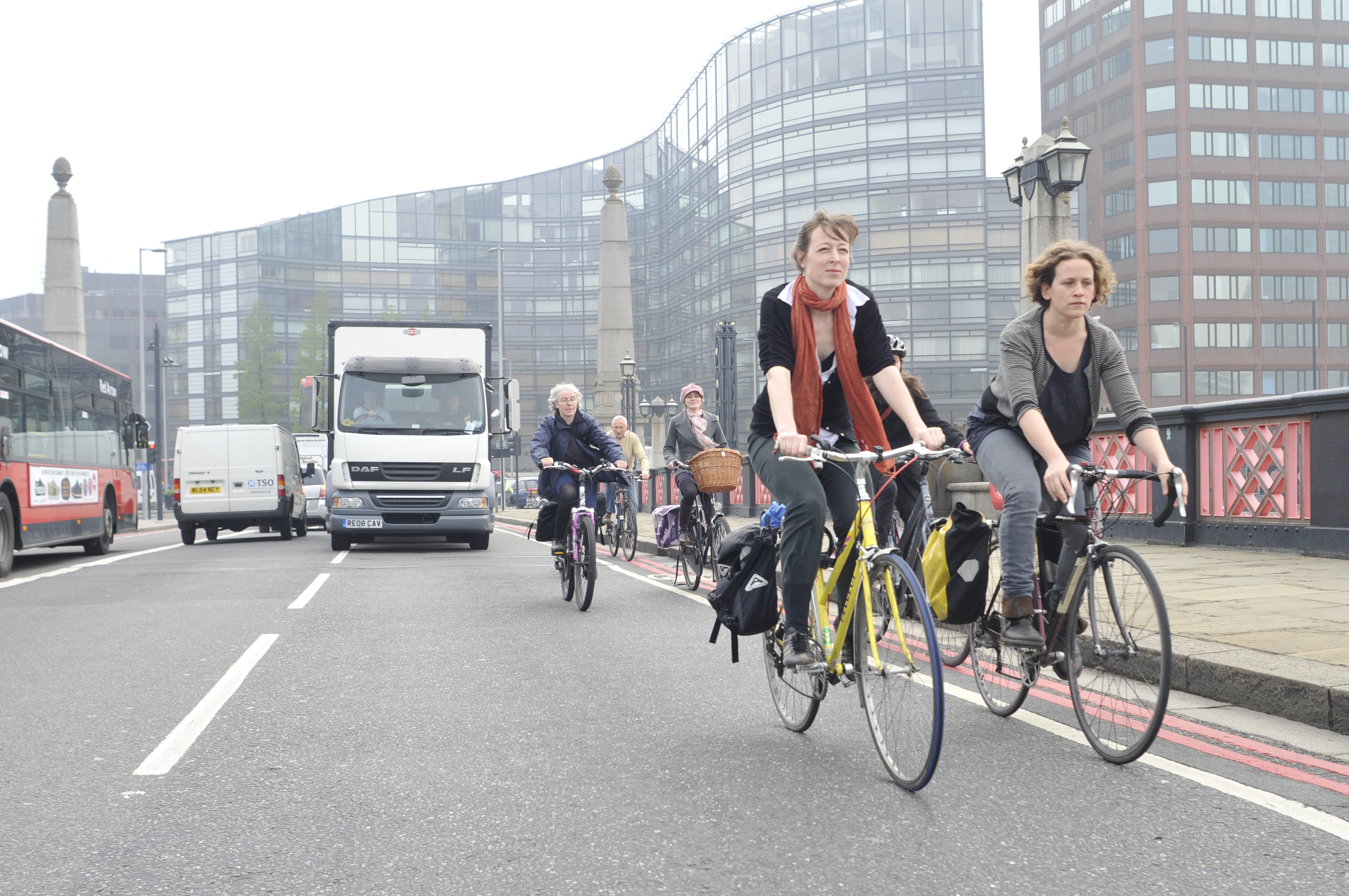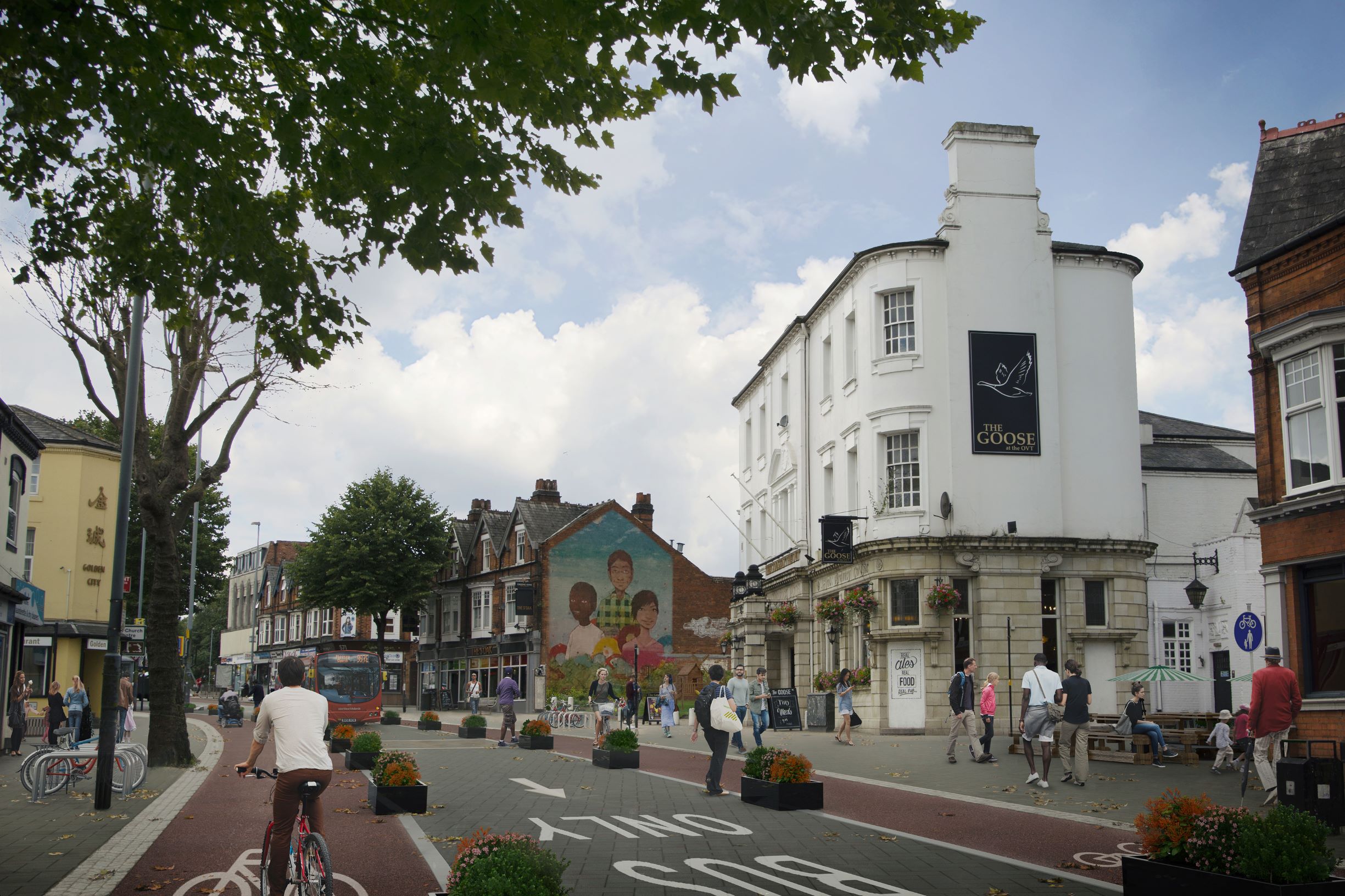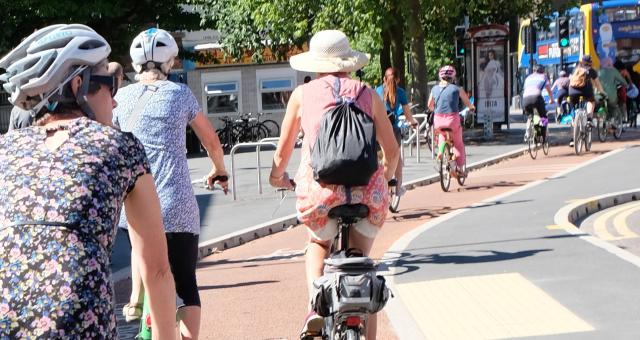How and why does transport spending need to be rebalanced?

How much does the Government invest in cycling and walking?
When the Department for Transport (DfT) published the Cycling and Walking Investment Strategy (CWIS, England) in 2017, it identified £1.2bn of funding over five years (2016-17 to 2020-21) that “may” be spent on cycling and walking.
Only £316m of this, however, was specifically earmarked by central government for investing in cycling and walking. The rest was expected to be allocated by local authorities (albeit from general funding streams that stem ultimately from central government).
The £316m comprised four funding lines:
- £101m to deliver the Cycle City Ambition scheme in full (a funding programme for eight cities, or groups of cities, originally intended to run until March 2018, although additional funding of £6.5 million was allocated in June 2018).
- £50m to continue Bikeability cycle training through to 2019/20 (i.e. stopping short of the full five year CWIS period);
- £85m for Highways England to deliver walking and cycling improvements along or across its network of trunk roads and motorways;
- £80m for an Access Fund to promote sustainable travel.
Funding decline
With almost half of the above funding being short-term commitments, the Government’s own annual investment in cycling and walking is, in effect, on the decline: from £95m in 2016/17 (amounting to £2.07 per person annually outside London) to just £33m in 2020/21 (just 72p per person).
This 65% reduction was in marked contrast to the £15.2bn allocated for capital spending on England’s motorways and trunk roads (the Strategic Road Network, SRN), via the Government’s first Roads Investment Strategy (RIS1).
Over the same five-year period, the annual allocations for RIS1 were set to increase from £1.83bn (or £40 per person outside London) in 2016/17, to £3.86bn (or £84 per person outside London) in 2020/21.
Are cycling and walking a good investment?
Yes. A report published by the DfT recognises that cycling and walking has a “very good” average benefit to cost ratio (BCR).
They also help tackle all of the major costs of urban transport identified in the Cabinet Office's 2009 report 'The wider costs of transport in English urban areas'.
In essence, this report found that the economic costs of urban congestion, air pollution, physical inactivity and road casualties are all of a similar order of magnitude at around £10 billion each (in 2009 prices):

Investing in cycling and walking can help address all the above problems, as well as climate change, noise and other more localised adverse impacts of motor traffic, without presenting any significant downsides.
By contrast, motorway and trunk road investment might reduce congestion for inter-urban traffic at ‘bottleneck’ locations where investment is made, but is also likely to generate traffic overall, thereby exacerbating congestion, pollution and other adverse impacts elsewhere.
While these remote adverse impacts are not well understood and rarely monitored, a review of the Government’s Post Opening Performance Evaluation (POPE) reports on motorway and trunk road schemes found that road schemes:
- generate more traffic - often far above background trends over the longer term;
- lead to permanent and significant environmental and landscape damage;
- show little evidence of economic benefit to local economies;
- cause widespread damage to biodiversity and worse than expected increases in greenhouse gas emissions, as well as encouraging car-dependent housing and retail development.
How much should the Government spend on walking and cycling, and what would the return be?
Cycling UK believes that, if the Government genuinely wishes to see walking and cycling become the norm for short journeys, and to reduce the external costs of road traffic and motor vehicle dependence, it needs to significantly shift the balance of transport funding from inter-urban roads towards more local transport solutions that encourage active travel.
The 2013 Get Britain Cycling (GBC) report, from the All Party Parliamentary Cycling Group (APPCG), called for measures to increase cycling from 2% of trips to 10% by 2025, and to 25% of trips by 2050.
To achieve this, it recommended investing at least £10 per person annually on cycling, rising over time to £20.
The Government’s more modest target is to double cycling trips by 2025.
To find out how much these two targets would each generate, Cycling UK commissioned research from Leeds University (2015). This calculated that, in today’s money:
- meeting the Government’s target would generate annual benefits worth £6.4bn in 2050, and ‘discounted’ cumulative benefits of £46.4bn;
- meeting the GBC’s targets would generate annual benefits worth £42bn in 2050, and a total cumulative benefit between 2015 and 2050 of almost £¼ trillion (£248bn).
Sustrans later estimated (in 2016) that achieving the Government’s target to double cycle use over 10 years would require investment of £8bn over that period.
Yet the value of these estimates of required spending are gradually declining in real terms, due to inflation. Moreover, they only covered cycling, as they pre-dated calls for (and the adoption of) a Cycling and Walking Investment Strategy.
Given this, Cycling UK is urging the Government to raise cycling and walking investment to at least 5% of transport spending by 2021 (when its 2nd Roads Investment Strategy is due to start, and when we believe a new CWIS also needs to commence), rising to 10% over the next five years.
Local funding
Urban local authorities should also be encouraged to aim for higher percentage spending levels, reflecting their initial starting points.
This policy adopts a precedent set by the City of Edinburgh Council, who committed in 2012 to allocate 5% of its transport funding to cycling, rising by 1% per year.
This ‘ramping-up’ policy reflects the fact that most councils would initially find it difficult to scale up their spending in a cost-effective manner. This is because they need time to recruit and train new staff, build up longer-term plans and consult on schemes, before such increased funding commitments could translate cost-effectively into higher levels of spending on the ground.
Ratio of capital to revenue
As well as substantially increasing the levels of funding for the CWIS, the Government also needs to achieve a healthy balance between capital and revenue funding.
Basically speaking, capital funding is for long-term assets (i.e. cycling infrastructure), whereas revenue funding is for ongoing costs and projects (e.g. behaviour change measures).
The difference in the two types of funding is crucial: new cycling infrastructure (capital funded) can’t achieve substantial levels of use without behaviour change measures to accompany it (revenue funded).
Positive encouragement is especially important if new infrastructure is to attract groups that are currently under-represented in cycling, e.g. women, older people, people with health conditions or disabilities, and people from BME communities, to overcome the perception that cycling is “not for people like me.”
DfT-funded research into the optimal balance of capital and revenue funding for sustainable transport projects in general (though not cycling and/or walking specifically), suggests a capital-revenue balance of between 70-30 to 80-20.
Cycling UK recommends that the balance should start initially at around 70-30 in the early stages of a local cycling strategy, increasing to 80-20 as funding levels increase.
This reflects the fact that relatively low-cost revenue-funded behaviour change projects can achieve relatively quick wins at a local level, whereas capital schemes take longer to develop.
On the other hand, once capital projects start to come on stream (i.e. once the authority in question has recruited staff, developed a network plan and some priority schemes and consulted on them), its capital budget will need to go up both in absolute terms and as a proportion of the total budget for walking and cycling.









